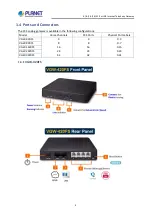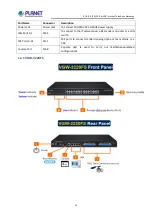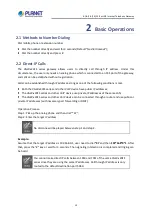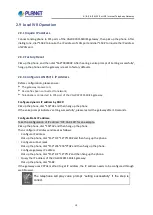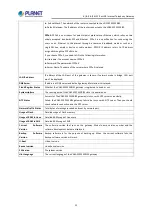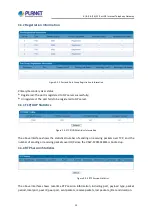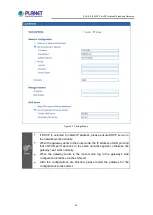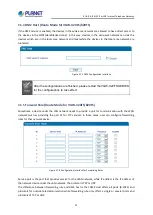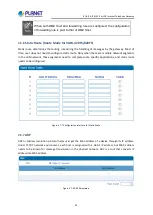
4-/8-/16-/24-/32-Port SIP Internet Telephony Gateway
16
2.3
Call Holding
Place a call on hold by pressing the “flash” button on the analog phone (if the phone has the button).
Press the “flash” button again to release the previously held caller and resume conversation. If no “flash”
button is available, use “hook flash” instead.
2.4
Call Waiting
If a calling party places a call to a called party which is otherwise engaged, and the called party has the call
waiting feature enabled, the calling party will hear a IVR voice ‘Please hold on, the subscriber you dialed is
busy’ and the called party will hear three beeps.
By pressing the flash button or the flash hook, the called party is able to switch between the new
incoming call and the current call.
2.5
Call Transfer
2.5.1
Blind Transfer
Blind transfer is used to transfer call to a third party without informing the caller. Assume that A and B are
in a conversation. A wants to blind Transfer B to C:
A presses
FLASH
on the analog phone to hear the dial tone;
Then A dials
*87
and C’s number and # (or wait for 4 seconds);
A will hear the confirm tone. Then, A hangs up, and B and C enter into a conversation.
Note
:
“
Call features enable
” must be set to “Yes” on Web configuration page. Caller A can place a call on
hold and wait for one of the three situations:
A quick confirmation tone (similar to call waiting tone) which follows the dial tone. This indicates
the transfer is successful. At this point, Caller A can either hand up or make another call.
A quick busy tone which follows a restored call (on supported platforms only). This means the
transferee has received a 4xx response for the INVITE and we will try to recover the call. The busy
tone indicates the transfer has failed.
Continuous busy tone. This means the call has timed out.
2.5.2
Attended Transfer
Attended transfer allows the transferring party either connects the call to a ringing phone (ringback
heard) or speaks with the third party before transferring the call to the third party.
Assume that A and B are in conversation. Caller A wants to
attended transfer
B to C:
A presses
FLASH
on the analog phone and wait for dial tone;
Then dial C’s number followed by # (or wait for 3 seconds);
If C answers the call, A and C are in conversation. Then A can hang up to complete the transfer;
If C does not answer the call, A can press “flash” to resume call with B.








